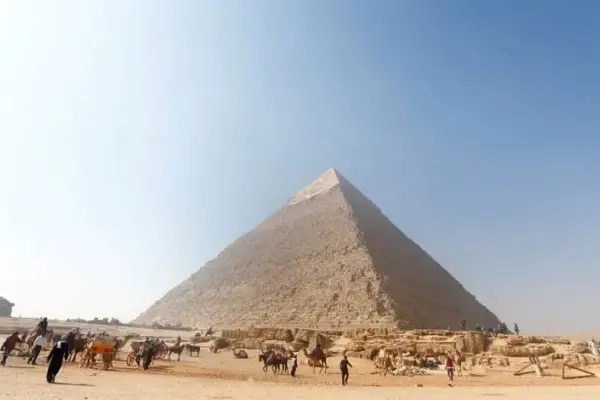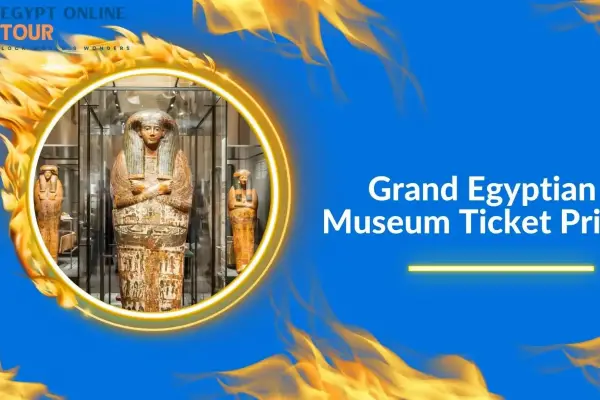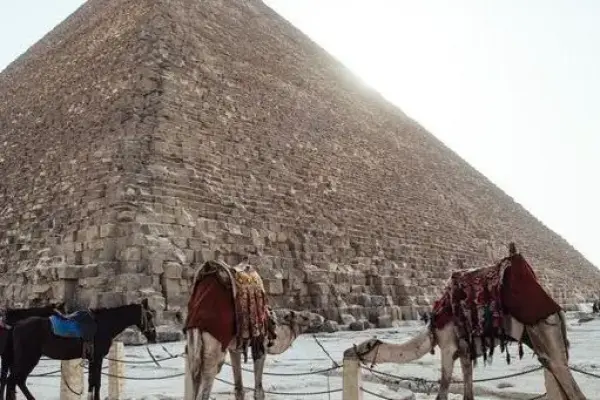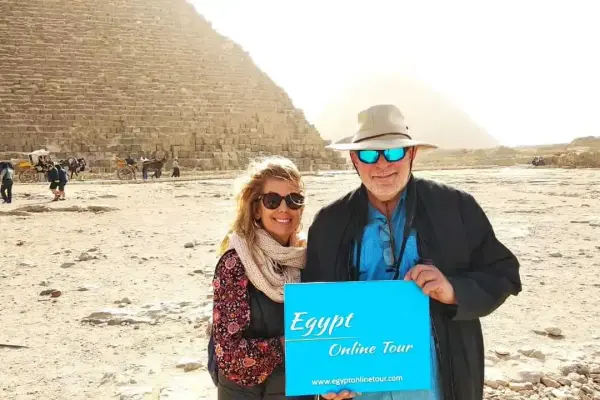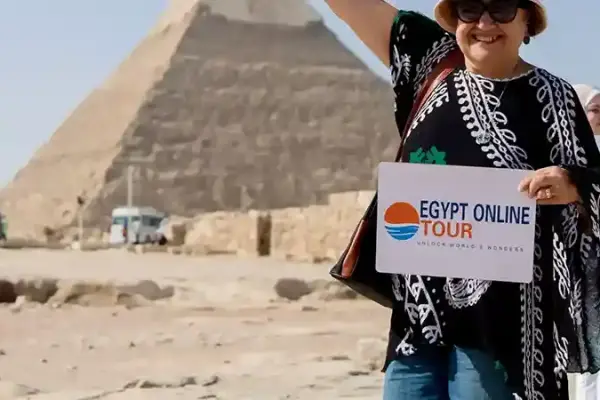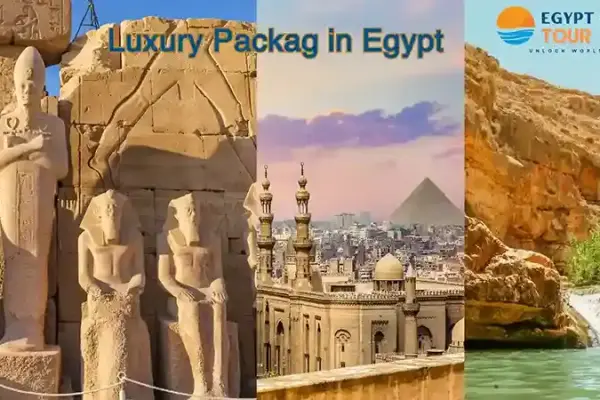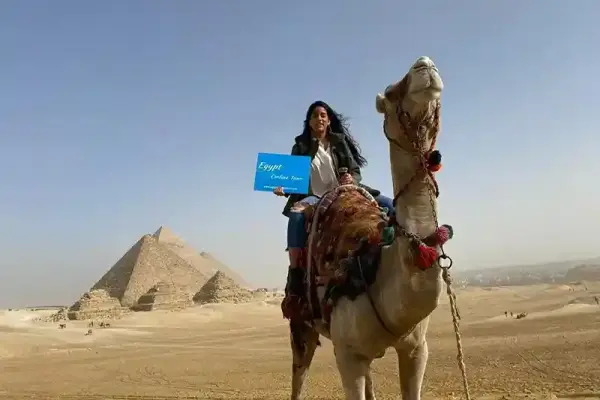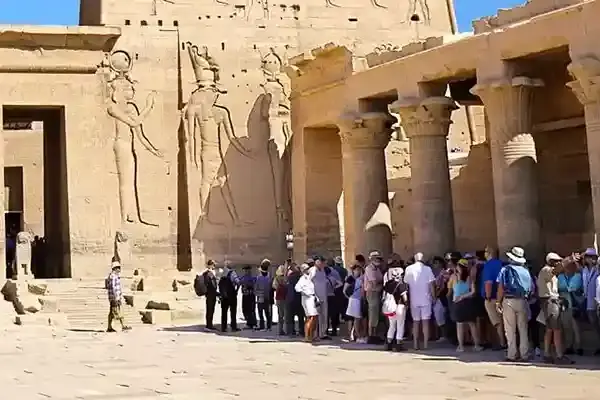Royal Garb of the Pharaohs
Can you believe that the oldest tailored dress in the world is not from France or Italy, but from Egypt, over 5,000 years ago? This article dives into ancient style and answers the fascinating question: what did Egyptian pharaohs wear? From the regal shendit skirts and crowns adorned with cobras to the symbolic sandals used to trample their enemies, pharaonic fashion reflects power, spirituality, and culture. It’s not only a story of clothing but a glimpse into the chronicles of a great civilization.
Table of contents [Show]
- Historically Accurate Ancient Egyptian Clothing
- Ancient Egyptian Men’s Clothing
- Ancient Egyptian clothing male
- Pharaonic Women's Clothing
- Children’s Clothing in Ancient Egypt
- Ancient Egyptian Slave Clothing
- The Importance of Clothing in Religious Ceremonies
- What did Egyptian pharaohs wear ?
- Royal Garb of the Pharaohs
- Footwear Fit for a Pharaoh
- What do pharaohs wear on their head?
- Ancient Egyptian clothing facts
- Iconic Headdresses: Nemes, Khat & Uraeus
- Ritual Furs: Leopard & Lion Skin Aprons
- The Shendyt: The Everyday Skirt of the Kings
- Linen Kilts & Shendyts for Daily Majesty
- Jewelry & Amulets of Divine Protection
- Wigs, Makeup & Beauty Rituals
- Discover Real Ancient Egyptian Clothing in Museums
- Book a Royal Costume Experience
- From Cairo to the Nile – Your Egypt Starts Here
Historically Accurate Ancient Egyptian Clothing
People assume that pharaonic clothing is just expensive dress and gold on chiffon, and that's all it is. However, there is much more to this study.
There is a whole study of "Pharaonic Egyptian Clothing", and researcher Gillian Vogelsang-Eastwood published a book that is known as the most thorough reference for pharaonic clothing.
Egyptian clothing was not simply a means to cover the body...but an intentional statement.
Every line had a meaning... every weave of fabric was intentional...every color meant something.
The pharaohs themselves wore clothing most like the general population, but then of better quality, and more detailed creative work.
The king wore a "shandit" just like any other man, but the difference lay in the type of linen—softer and purer—and in the sewing method, which used complex techniques, without a single stitch being visible!
The Tarkhan Dress
Gillian talks about something amazing: the ancient Egyptians were the first people in the world to know about tailored clothing, not just items wrapped around the body.
Did you know that Tarkhan's wear is the oldest dress in the world? Made of very fine linen and meticulously sewn, it's over 5,000 years old. What's even more surprising is that this dress evolved from one period to the next; it wasn't fixed. For example, in the Old Kingdom, the dress was simpler and more revealing. In the New Kingdom, however, we find layers, pleats, delicate patterns, and stitching that denotes luxury.
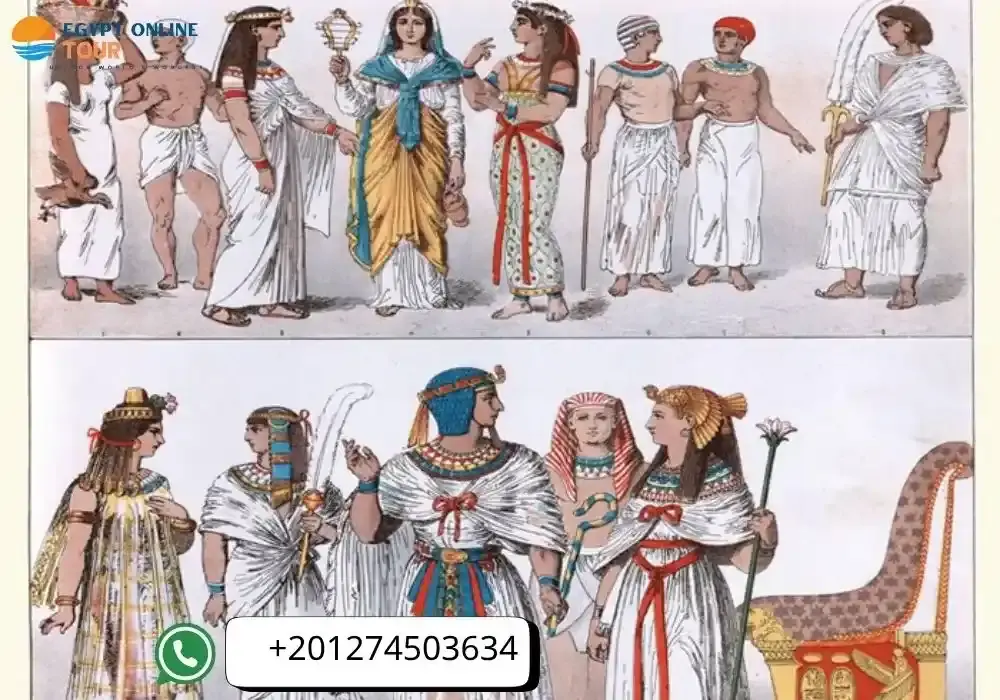
Gender and Class Designs
Men | Women
| |
Commoners | Shendit (short apron)+ belt | Calasiris (simple linen gown with or without shoulders) |
Nobles | Shendit embroidered + necklace, sheer | pleated linen gown + beaded net |
Royals | Nemes (headdress) + leopard skin | white/red robes + Hathor crown (for queens)
|
Visual Evidence:
- Statues of Rahotep and Nofret (Egyptian Museum) proved fabric details.
- Font of Nakht's tomb (TT52) depicts workers wearing only aprons.
- Linen dress from the 18th Dynasty (Metropolitan Museum)
Even the colors were symbolic. White symbolized purity. Red symbolized strength. Blue symbolized protection. So when you see a statue of a pharaoh wearing a blue crown and a pleated robe cinched with a belt, don't mistake it for decoration!
This was a message to the people: "I am the king, the strong, the protector, the chosen one of the gods."
Ancient Egyptian Men’s Clothing
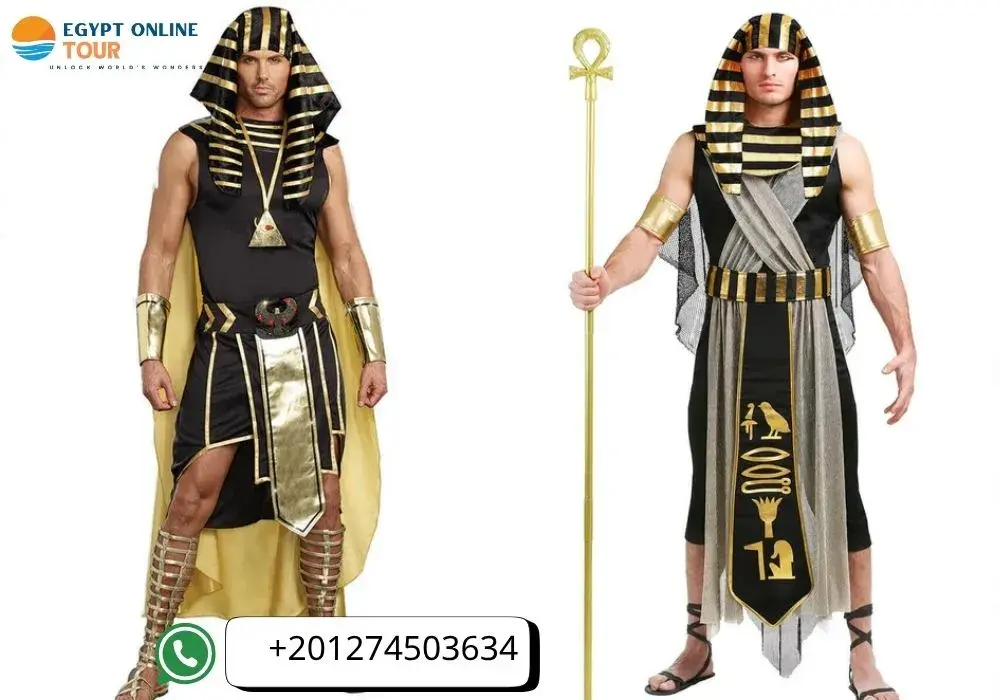
If you ask anyone: "What did a pharaonic man wear?" they'll immediately reply: "Shendit." But the truth is, men's clothing in ancient Egypt was an art form, as if it spoke.
First, the word "shendit" isn't just a wraparound skirt; it was the essential garment for every man—from the common peasant to the king himself.
From the Shendit to the Royal Cloaks
In the Old Kingdom
- men wore a simple
- short shendit
- wrapped around the waist
- tied with a belt.
- The belt wasn't just for decoration.
- There were belts with patterns and designs that defined social class and even profession.
In the Middle Kingdom
- clothing began to evolve.
- Length increased, and it became pleated.
- We also find light, sleeveless shirts over the shendit.
- Pharaonic men became "layered."
In the New Kingdom
- the hard work began.
- Kings and priests began wearing tailored clothing, and this was a huge leap.
- Now It featured a tunic (long shirt) with sleeves, and an outer cloak or robe wrapped around the shoulders.
Ancient Egyptian clothing male
The oldest piece of men's clothing found was from the tomb of "Ka" – dating back to 2400 BC – and was sewn with extraordinary skill. This indicates that there were tailors working with techniques that rival those of today's haute couture. The most popular materials they used were:
Linen, which was the king's favorite fabric. But not just any linen, as the king wore linen with a fineness of up to 18 threads per millimeter, which meant it was superior to the European linen imported worldwide today.
clothing male Colors
As for colors, there was great respect for white as a symbol of purity, but there were also royal clothing in dark blue and red, and clothes were anointed with perfumes and oils to keep them soft and fragrant.
On special occasions, men also wore small crowns or headdresses like the "nemes" or "keffiyeh", along with a wide necklace – a symbol of prestige and power.
A man in ancient Egypt didn't dress randomly, but rather with an "identity." Clothing revealed who he was, whether he was a simple man, a priest, a soldier, or a pharaoh ruling the Nile.
Watch yourself the real pharaonic wearing via best Egypt Classic Tours .
Pharaonic Women's Clothing
For anyone who imagines that ancient Egyptian women wore simple clothes, they need to look at history from the beginning, because the Pharaonic woman was a fashionista, but with a sacred flavor.
Pharaonic Women in the Old Kingdom
In the Old Kingdom, the basic clothing was a tight, straight dress, called a "calatrase," worn from shoulder to toe, and often sleeveless.
It's also amazing that they used extremely fine, sometimes sheer, linen, cut with such precision that it rivals modern haute couture designs.
Studies indicate that the thread count in some fabrics reached 30 threads per millimeter!
This is an astonishing number, even for modern textiles.
In many tombs, especially from the New Kingdom, we have found drawings of women wearing dresses with very fine pleats that shimmer and move smoothly with the movement of the body. This wasn't just about beauty; it was also a political art, as a woman's clothing reflected her class, her relationship with the king, or even her role in the temple.
The queen clothing
The queen, for example, wore a tight-fitting dress, fully decorated with patterns and drawings, or even embroidered with beads and gold. She would also wear a long, transparent robe tied at the shoulder over it.
Nefertiti and Hatshepsut appeared in very distinctive designs—such as the blue crown, a symbolic pharaonic beard, and a dress decorated with religious symbols like the ankh or the ka.
Jewelry
Jewelry was also an essential piece of clothing, not just an adornment. This was the case with the wide jade necklace worn around the neck and chest, which was filled with colors: blue, turquoise, and gold. Each color had a meaning: blue for protection, red for energy, and green for fertility. Hairstyles were also part of the overall look, and there were wigs with more than 30 braided strands, complete with gold clips and very luxurious materials.
Another exciting discovery is that dresses belonging to upper-class women were sometimes fully sewn, tailored, and not wrapped—a revolutionary change at the time. Even children had simple but ornate clothing, often adorned with symbols that offered them luck and protection. That's why we always say that ancient Egyptian women dressed knowing they were not only beautiful, but also strong and influential. Every detail of their clothing said, "I am not just a woman... I am an icon of civilization."
You can give yourself the best chance to try the ancient Egyptian women in avery rare Egypt Adventure Tours with Egypt Online Tour
Children’s Clothing in Ancient Egypt
As you examine the paintings in temples and tombs, you'll notice something strange: many children in ancient Egypt were without clothing. This wasn't due to neglect, poverty, or even coincidence. In ancient Egypt, children up to the age of 6 or 7 were often not clothed, as they considered the innocence and purity of children to be part of the rituals of God.
But that doesn't mean there were no clothes for children. Indeed, there were, and they were very special. For example, on special occasions, or when children reached a certain age, they would wear small skirts (shandit for children) or a simple dress for girls made of white linen, but without sleeves and tied over the shoulder.
The "side braid sign
There was also a very popular accessory for children: the "side braid"—a distinctive sign that the child was still young and had not yet reached puberty. The rest of the head was shaved, leaving a single strand, which was then trimmed after the child grew up.
Children from wealthy or royal families
Children from wealthy or royal families had very special clothing—embroidered, colorful, and paired with a patterned belt, and sometimes even small jewelry or necklaces that offered protection. One of the most beautiful discoveries was a dress belonging to a child from a royal family, more than 3,000 years old. It was made of very light linen and decorated with delicate geometric designs, demonstrating that children's clothing was not only for protection, but also for pride and belonging. There was also special clothing for children on religious occasions, especially if the child was participating in a procession or ritual. They would wear a small paper crown or a transparent robe with religious motifs.
The Pharaonic Way of Designing Children's Clothing
They designed clothing for children in a way that allowed comfort and freedom of movement, so they could play, learn, and jump around at their leisure. Also in the New Kingdom, tailored clothing for children began to appear, especially among the upper classes. We see drawings of a child wearing a short tunic with a belt, and sometimes a light shawl over the shoulder.
Ancient Egyptian Slave Clothing
It is important to note that the concept of "slave" in ancient Egypt did not always mean a humiliated, owned person. There were many classes of workers and servants, some of whom worked in palaces, temples, or large houses and had a clear social status.
Dress, in particular, depended on the slave's occupation and status:
- Those who worked in the fields or construction often wore a very simple shendit—a short piece of linen wrapped around the waist. They could be bare-chested due to the heavy nature of the work under the sun.
- Servants inside houses or palaces, especially those of the upper class, wore a slightly longer shendit or a simple, light, sewn tunic, often cleaner and more elegant.
- Slaves in temples sometimes had their own religious attire, linked to the role they performed, especially if they were serving priests or preparing offerings. Researcher Gillian Vogelsang-Eastwood explains that the linen they wore wasn't always of poor quality, and some slaves in upscale households wore fine linen but without decorations. This indicates that the dress was respectful of the local environment, not merely humiliating. Hairbands or simple headbands were also worn, especially for women working in the kitchen or laundry, to protect their hair.
From the depictions in New Kingdom tombs, we see that slaves weren't always barefoot or humiliated. Some wore simple sandals, clean shoes, and stood respectfully amidst ritual scenes.
Of course, not all stories are rosy. At certain times, particularly with prisoners of war, they were forced to wear very simple or torn clothing, as a form of humiliation or as a clear form of discrimination.
Learn more about: Advanced Cities In Ancient Egypt
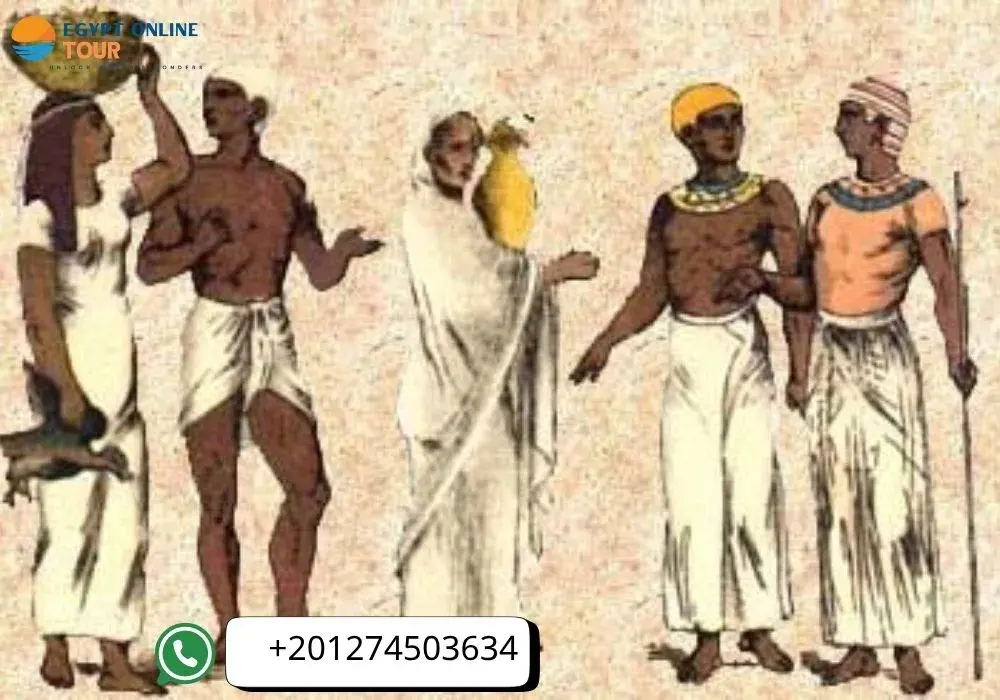
The Importance of Clothing in Religious Ceremonies
In ancient Egypt, religious rituals were at the heart of daily life, but what many don't know is that each ritual had its own dress, and each thread had a sacred meaning.
Linen: The Sacred Fabric
The first sacred rule in temples was that clothing must be pure, white linen, washed seven times before rituals, because linen was a symbol of purity and divine light. It was strictly forbidden to bring any woolen or leather clothing into temples because they were considered "impure." Even priests changed their clothes more than once a day, depending on the ritual they were performing.
Panther and Lion Skins: Like the High Priests
In depictions, we see priests and kings wearing panther or lion skins over their clothing.
This isn't a show-off; it's a symbol of power and control over chaos, and that the priest or king was playing the role of the god in achieving cosmic order, "Maat."
In ancient Egypt, ritual clothing wasn't random or merely a matter of elegance.
It was a password that opened the door to communication with the divine world, making the king or priest an intermediary between humans and the gods. During religious ceremonies, the pharaoh wore the double crown, a robe decorated with sacred motifs, and sometimes a scepter and staff, symbols of divine authority.
In some rituals, the king wore a special shendit embroidered with gold and silver, along with a breastplate filled with ankh amulets and amulets for protection and blessing.
What did Egyptian pharaohs wear ?
The clothing of the pharaohs was not just fashion; it was a symbol of divine power and status. Although all ancient Egyptians wore light linen clothing to suit the hot desert climate, the clothing worn by the pharaohs was distinguished by its luxury and meticulous detailing.
The Shent:
A wrapped linen skirt worn by everyone, but pharaohs and nobles preferred a lavish version, often adorned with an ornate belt or artistic apron.
Wigs:
Ancient Egyptians often shaved their heads for reasons of hygiene or ritual and wore luxurious wigs, especially for special occasions. The pharaohs owned the most magnificent of these.
The Khat:
A simple linen headdress worn by nobles and pharaohs, it differs from the famous Nemes headdress in that it is unlined and not folded or tied at the back.
Jewelry: A symbol of elegance and sanctity
- Usekh: A massive necklace covering the shoulders, made of glazed beads or precious stones, and sometimes gold and silver.
- Pectoral: A pendant or brooch-like ornament, often bearing engraved or painted sacred symbols.
Crowns and Royal Headdresses=
Each crown has a story, and each headdress has a profound significance:
- Nemes: The famous striped headdress with a braided lion's tail, often decorated with a cobra and a vulture.
- Deshret: The red crown, symbolizing the rule of northern (Lower) Egypt.
- Hedjet: The white crown, symbolizing the rule of southern (Upper) Egypt.
- Pschent: The double crown, a combination of red and white, embodies the unity of Egypt.
- Khepresh: The blue crown or "war crown," worn by the pharaohs in battle and a symbol of military power.
- Atef: The Hedjedet crown with added feathers, associated with the god Osiris and worn in funerary rituals.
- Hemhemet: A more elaborate version of the Atef, featuring rams' horns and serpents, rarely used due to its size.
Queens' Crowns
Female queens and pharaohs had their own crowns:
- Modius: A flat crown, as seen on the bust of Nefertiti, usually decorated with a cobra.
- Royal Vulture Crown: A bird of prey cradling the face, a symbol of protection and motherhood.
Decorated belts and aprons were not merely practical items; they were also adorned with beads, leather, and stones to give the pharaohs a refined, regal appearance.
Leg and head jewelry included bracelets, anklets, armbands, and necklaces, as well as crowns and ribbons decorated with cobras or protective eagles.
Fabrics such as linen. Although linen was the predominant fabric, the pharaohs enjoyed special privileges, including wearing leather or wool, and even lion and leopard skins as symbols of power and majesty.
Know more about: Queen Nefertari
Symbols of Power: The Serpent and the Eagle
- Uraeus: The upright cobra, a symbol of sovereignty and divine protection.
- The Egyptian vulture: symbolizes purity, motherhood, and protection, and is often used alongside the cobra on crowns.
What materials were used to make crowns?
No actual pharaonic crown has been found to date. All we know is derived from inscriptions and statues. Researchers believe that crowns were made of leather or reinforced cloth, and perhaps of braided straw, like the Dechert crown.
The false beard (Postiche): An attribute of divinity
Pharaohs wore a false beard tied to the chin, representing the god Osiris. It was a symbol of divinity, and even Queen Hatshepsut wore it to confirm the legitimacy of her rule. The clothing of the pharaohs was not merely an adornment; it was a visual communication tool that reflected power, divinity, and social order. From pure white linen to majestic crowns and glittering jewelry, each item carried a clear message: "I am pharaoh... and I am the divine ruler of the land of Egypt."
Imagine yourself beside the pharaohs wearing like him in a Luxor and Aswan Nile Cruise with the best company for Luxury Egypt Tours .
Let our local travel experts help you design the perfect itinerary. Whether you're seeking adventure, culture, or relaxation, we've got you covered!
Royal Garb of the Pharaohs
How do we know that the person before us is a pharaoh? From the crown or the staff? From the throne or the clothing, which is the first thing that screams, "This is the king!"
The clothing of the pharaohs wasn't just expensive clothing; it was a political and religious declaration that said, "I am the chosen one of the gods, and I rule Upper and Lower Egypt."
The Royal Shendit
The first thing we notice is the royal shendit—not just any ordinary shendit. It was made of extremely luxurious linen, often folded geometrically, decorated with intricate motifs, and often tied with a belt bearing the "sa" symbol for protection.
But kings weren't content with the shendit. They also wore a long robe over it, sometimes called the "kallat" or "shoulder-tied robe," which was adorned with gold or fabric decorated with religious motifs.
The King's Crown
And the Crowns of Kings: Each crown had a specific meaning:
- The White Crown (Hedjet): A symbol of Upper Egypt
- The Red Crown (Desheret): A symbol of Lower Egypt
- The Double Crown (Beshent): When the king ruled the entire country
- The Blue "Khebresh" Crown: The crown of war, often worn during battles and military processions
Each crown complemented the outfit, expressing a specific political or religious stance. Above the forehead, there was always the "Waraios" symbol (the cobra), meaning that the king was protected by the gods and ready to strike any enemy at a moment's notice.
Pharaohs like Ramses II and Tutankhamun were fully adorned with embroidered designs—including falcons, the lotus flower, the ankh, and eternal life. Everything was intentional, and each embroidered design carried a message.
Colors in Royal Dress
- White: Purity and Just Rule
- Blue: Protection from Evil Spirits
- Gold: Symbol of God, Eternity, and the Sun
- Red: Symbol of Power and Dominance
Another subtle observation made by Gillian Vogelsang-Eastwood is that some royal garments were woven with real gold threads, and that they wore layers of robes, not only for their physical majesty, but also for protection during rituals and processions.
The king in ancient Egypt didn't just "dress up," he was transformed into a living divine symbol, and every piece of his attire proclaimed, "I am the Pharaoh of Egypt."
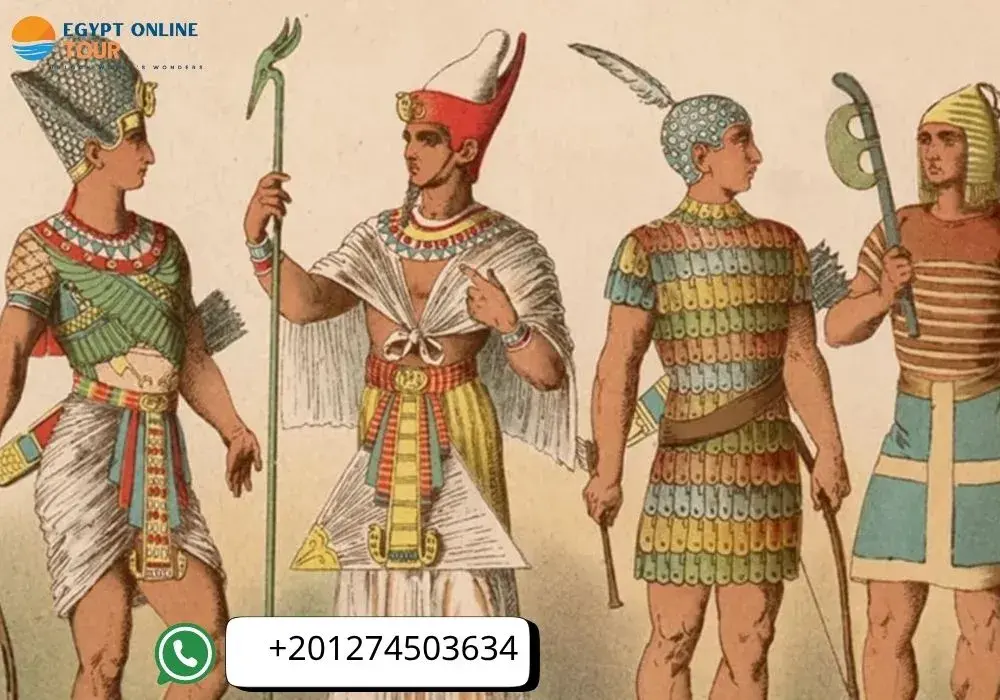
Footwear Fit for a Pharaoh
Footwear in ancient Egypt was a symbol of power, purity, and control over enemies. The most common type used by the pharaohs was the sandal—made of leather, papyrus, or palm fiber.
The pharaoh's sandal was exquisitely crafted and featured embroidery, gold threads, and engravings symbolizing the enemies the king would encounter. In the tomb of Tutankhamun, we found a sandal made of wood plated with gold, engraved with Egypt's enemies—Nubians and Asians—which the king would wear on special occasions to symbolize superiority and victory.
Simpler sandals
Of course, it wasn't every day that a pharaoh walked around in golden sandals. In everyday life, he wore simpler sandals, often made of soft leather, handcrafted, and padded for comfort. However, when entering the temple in this state, one must be barefoot, as the ground was sacred. This was a strong religious custom among the pharaohs and priests. Papyri records that the king sometimes had his feet washed with rose water and aromatic oils before putting on the royal sandals.
Shoe Colors
- Gold symbolized immortality.
- Black for protection.
- Red for power.
Natural colors reflected purity. Some sandals had long straps that wrapped around the leg—very rare—and were often reserved for kings or high priests.
Watch the real pharaohs' sandals within your Grand Egyptian Museum Tour, which is one of the best Egypt Classic Tours
What do pharaohs wear on their head?
The pharaoh didn't wear anything on his head. He wore symbols that spoke, proclaiming his authority, his origin, and his connection to the gods. As Dr. Selim Hassan said, "The crown wasn't just an ornament... it was a vessel for the power of the gods."
The heads of the pharaohs were crowned with symbolic and religious headdresses that represented their cosmic authority. Here are the types documented by archaeological evidence:
1. The Double Crown (Pschent): The union of Egypt and the form:
- The White Crown (Hedjet) ← Upper Egypt (the South).
- The Red Crown (Deshret) ← Lower Egypt (the Delta).
- Materials: Gold-plated leather and lapis lazuli (Turin Museum).
2. The White Crown (Hedjet): Southern sovereignty
- Worn by: Sneferu (Fourth Dynasty) in the Dahshur statue. Symbol:
- Purity (a color associated with the god Osiris).
- Made of hardened linen (Chester Beatty Papyrus).
3. The Blue Crown (Khepresh): A crown War
- The appearance is conical, decorated with a sun disk and a serpent.
- Evidence of this is found on statues of Ramesses II at the Battle of Kadesh (Abu Simbel Temple).
- A model of gilded blue leather was found in the tomb of Tutankhamun.
4. The Golden Headdress (Nemes): The most famous symbol of the pharaohs
- A blue and gold striped cloth.
- The ends hang down over the chest.
- Attached with a "braid" behind the ears.
- The most famous example: Tutankhamun's mask (Egyptian Museum).
- The symbolism is the rising sun (the disc on the forehead) and eternity (the eagle and cobra).
5. The Red Crown (Deshret): The power of the North
- Worn by the pharaohs in the ritual of "Unification of the Two Lands."
- The material is cowhide dyed with iron oxide (because of its color).
- Decorated with the bee (the symbol of the Delta).
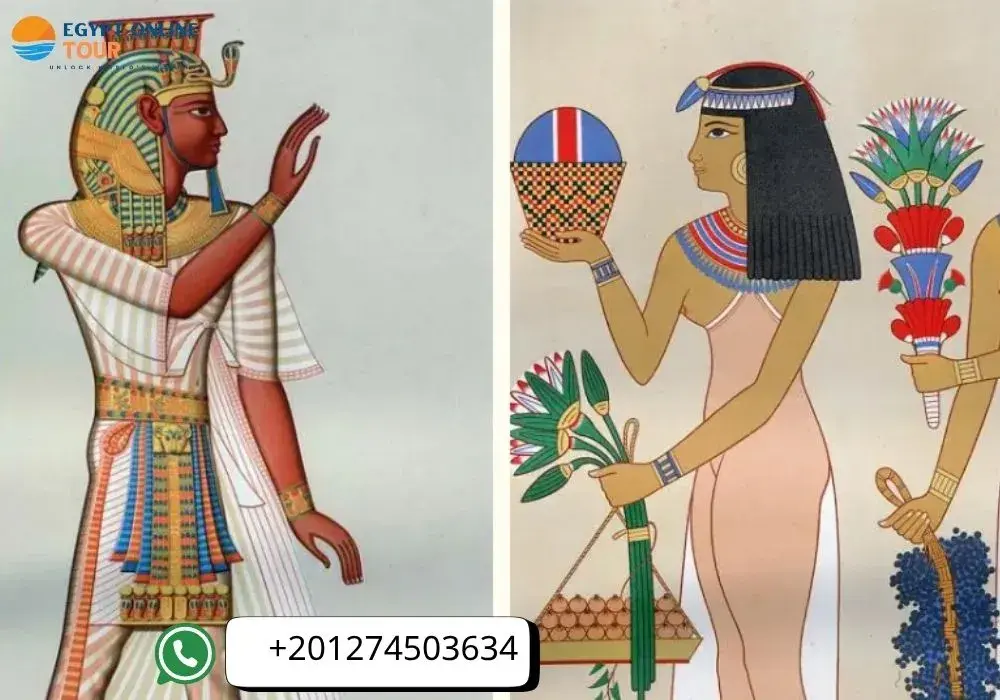
Ancient Egyptian clothing facts
Pharaonic fashion was much more complex and richer than the image we have in our minds. Come and discover the 10 strangest and most beautiful facts about ancient Egyptian clothing:
- Linen is purer than light: Almost all clothing was made of linen, but kings wore linen washed and treated more than seven times, until it was as white as sunlight.
- Linen was a symbol of purity and divine cleanliness.
- The oldest dress in the world is Egyptian: the Tarkhan dress, about 5,000 years old, is considered the oldest tailored garment known to mankind. It is made of very fine linen and sewn with amazing precision.
- The Shendit: Egyptian kings wore the Shendit, a geometrically pleated skirt, often decorated and studded with gold threads… a symbol of power and control.
- Crowns for every situation: There was only one crown: white for Upper Egypt, red for Lower Egypt, double for ruling both countries, and blue for war.
- The royal beard, even for queens: Kings wore fake beards as a symbol of the god Osiris, and in throne ceremonies. Some queens, like Hatshepsut, wore beards to show that they were a legitimate and powerful ruler, like the kings.
- Jewelry as protective amulets: Amulets like the Ankh and the Eye of Horus were not just for decoration; they served as spiritual shields against evil and disease, and the pharaoh was buried with them in his tomb for eternal protection.
- Sandals to defeat enemies: Some royal sandals were engraved. They depicted Egypt's enemies, so the king could "walk over them" as a symbol of power and control, even with every step.
- Wigs for Kings and Queens: A full shave was essential for cleanliness and religion, but luxurious wigs made of natural hair or plant fibers were a sign of status and beauty.
- Makeup wasn't just cosmetic: green and black kohl protected the eyes from the desert sun and was believed to protect against evil spirits and disease.
Clothing was part of religious rituals: Priests and kings changed their clothes according to the weather, sometimes more than three times a day, and washed their garments in scented water and sacred oils.
Know more about: Egyptian Tattoos Symbols and Meanings
1. The Nemes
- Icon of icons: A striped cloth wrapped around The head, and descends to the shoulders.
- It's not a metal crown, but its meaning is very significant.
- It symbolizes the gods' protection of the pharaoh, indicating that he is "anointed by our Lord."
- The most famous example is the golden statue of Tutankhamun, wearing a nemes, with the "uraeus"—the royal cobra—on his forehead.
3. Uraeus
- The cobra that always appears on the pharaoh's forehead isn't just an ornament; it's like a talking cobra.
- The symbol of Wadjet, the goddess of protection, was always ready to spit fire at any enemy who threatened the king.
- Its presence on the king's head means "I am." Protected by the gods... and very close to them."
3. Khat
- Slightly simpler than the nemes, it's a soft, striped piece of cloth worn more daily, covering the entire head and falling behind the neck.
- Some priests and kings preferred it in everyday life.
- The difference between them is that the nemes is for rituals, processions, and statues, while the khat can be worn while touring the palace or temples.
- Sometimes they were made of gold, sometimes studded with precious stones, and sometimes appeared next to an eagle (the symbol of Upper Egypt), to tell the world that the king ruled both lands.
Julian Eastwood confirms that these crowns and scrolls were not just shapes, but were meticulously crafted and ritually decorated. Some were designated for specific occasions, such as a war crown, a crown of rule, a religious crown, and even a crown for funerals and mummification.
The blue war crown, "Kheprish," for example, was made of reinforced cloth or colored leather and was worn in battles and military processions. It was cylindrical and slightly tall, and always had a scepter.
Ritual Furs: Leopard & Lion Skin Aprons
The pharaoh not only wore gold and jewelry, but also had distinctive ritual clothing used during religious rituals or on the battlefield.
Sacred Furs: Leopard and Lion Skin
In mural scenes inside temples and tombs, we see priests and kings wearing leopard or lion skins, but what is the secret behind them?
In ancient Egypt, the leopard skin was associated with the god Maat and cosmic balance. Therefore, when worn by a priest or pharaoh, he represented the "Lord of Cosmic Order"—imposing order and dispelling chaos. The lion skin, on the other hand, symbolized courage and control and was worn in royal rituals as a symbol of strength and victory.
The Religious Origin of the Leopard Skin
The religious origin of the leopard skin is that it was believed to represent the starry sky (black skin color + golden spots). The high priest (Sem) wore it during the Opening of the Mouth ceremony to commemorate the dead. As for the full-skinned form, with a leopard's head covering the chest, the body is tied around the waist, and the skins are coated with gold resin to preserve them (as in the statue of the priest Iunmutef in the British Museum).
The lion skin
The lion skin was reserved for kings during the Sed Festival (Jubilee) as a symbol of power, and the lion's tail was attached to the pharaoh's apron (inscription on the Pillar of King Narmer).
The Shendyt: The Everyday Skirt of the Kings
In everyday life or at official events, kings wore the shendyt – a skirt made of fine linen, wrapped around the waist and tied with a belt.
Its simple design was not random! It showcased the pharaoh's athletic physique and emphasized his status, with pleats representing order and precision, and a sharply folded piece of white linen (an "accordion" fold) wrapped around the waist, secured with a leather belt topped with a gold plaque (engraved with the king's name).
The Development of the Shendyt
- The Old Kingdom: Short to the knee.
- New Kingdom: taller with two overlapping layers (as in the statues of Ramesses II). Ritual skirts (decorated with leather) were used for formal occasions. The shendit was added:
A golden leather apron over linen and a net of golden beads woven over the leather (a model was found in Tutankhamun's tomb).
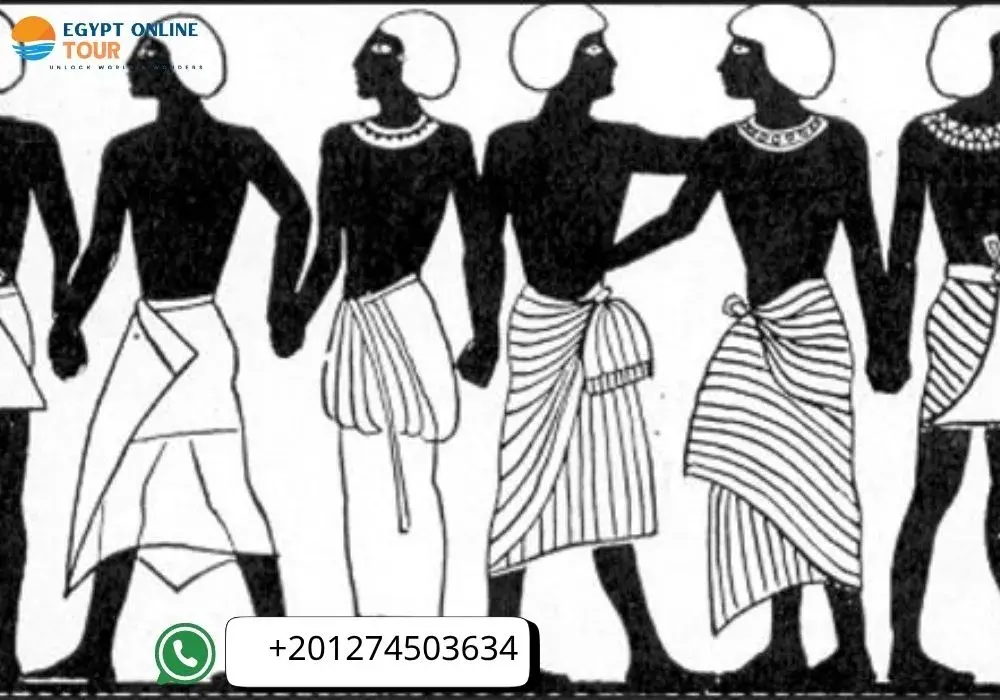
Linen Kilts & Shendyts for Daily Majesty
All of these garments were made of pure linen, extracted from the flax plant grown on the banks of the Nile. It was washed and bleached several times to become as bright as light—a symbol of purity and chastity.
The garments were not merely a showpiece; they were loaded with symbolism, used in rituals to show that the king was not an ordinary human being, but rather a god on earth.
Comparison between ritual and everyday clothing
Type | Material | Class | Survival Status and Examples |
Leopard skin aprons | Animal skin + gold | Priests/kings | Rare (skins damaged) |
Linen shendit | Egyptian linen | all layers multiple | (better preserved) |
Gilded aprons | Linen + gold | Pharaohs only | Exceptional (like Tutankhamun's) |
In the world of the pharaohs, every thread and every A piece of fabric has meaning! Whether it's a leopard print or a simple linen skirt, it's not just a fashion statement; it's a royal code.
Jewelry & Amulets of Divine Protection
We all know that the pharaohs were the kings of the earth, but did you know that every ornament, every bead, and every line of makeup had a true meaning and protective power? Come, let me explain in detail.
Jewelry
In ancient Egypt, jewelry wasn't just for decoration; it was spiritual armor. Kings and queens wore wide necklaces (yoshbet) studded with lapis lazuli, turquoise, and gold. The colors weren't random. For example, blue represented protection from evil spirits, green represented fertility and eternal life, red represented strength and victory, and gold was the color of the god Ra, a symbol of immortality. The most famous jewelry used as a protective weapon was:
The collar (weskh):
- Beads in the shape of flowers/animals, closed with a clasp in the shape of a falcon (the symbol of Horus).
- Their function: to repel evil spirits before they enter the mouth (Aeneid Papyrus).
The armbands (ba):
- Made of gold and carnelian, they carried small statues of the gods.
- The most famous of these: Thutmose III's double cobra bracelet (Louvre Museum).
Amulets
The most famous amulets were the Ankh (symbol of life), the Scarab (scarab) for luck and regeneration, and the Eye of Horus (protection from evil). They were often hung around the chest or sewn into royal clothing, and even placed with the deceased in the tomb to protect them in the afterlife. Here is a list of the most common amulets:
Amulet | Shape | Purpose | Archaeological Evidence |
The Djed Pillar | A golden spine | the stability of the body in the afterlife. | Tutankhamun's Coffin.
|
The Wounding Eye (Udjat | The Eye of Horus | Protection from evil | Found with 95% of royal mummies |
The Heart Scarab | A stone scarab with an inscription from the Book of the Dead | guaranteeing the innocence of the heart in the trial of Osiris | 200+ scarabs have been discovered in the Valley of the Kings |
The Knot of Isis (Tet) | A red knot protecting women in childbirth | Dendera Temple inscriptions |
Most amulets were made of gold (for permanence), lapis lazuli (for heaven), or faience (for purity).
Wigs, Makeup & Beauty Rituals
In addition to ordinary jewelry, there were ornate crowns and gold bands worn on the forehead, often bearing the "waraios," the royal cobra, signifying the protection of the pharaoh and awe-inspiring to enemies.
Wigs: Magnificence and Royal Rituals
Kings and queens shaved their natural hair for religious and hygiene reasons, but they also wore wigs made of natural hair or plant fibers. These wigs were not just for elegance; they also symbolized power and order, and were decorated with gold ribbons or lotus flowers. Each wig had a significance and a purpose.
Type | Description | Users
|
Royal | Three-tiered: Intertwined layers with copper braids | pharaohs) |
Nubian Short | Densely braided locks | common people) |
Hieratic | Braids striped with gold and beads | priests |
Kings on important occasions wore large, carefully braided wigs, sometimes with up to 30 strands, decorated with precious stones.
Makeup: Beauty and Protection at the Same Time!
The famous black Egyptian kohl was made from malachite and galena and was used to define the eyes
Not only for aesthetic beauty, but also to protect them from the desert sun and ward off evil spirits.
Queens like Nefertiti used lipstick and henna, and sometimes perfumes and aromatic oils applied to their skin and hair, as part of religious rituals, as well as for healing and hygiene.
There was also blush (henu), which was a mixture of red ochre powder and wild lettuce oil, used in ceremonies to mimic the color of the goddess Hathor.
Royal Beauty Tools (Amazing Discoveries)
Princess Sitamun's Makeup Box:
- A silver mirror with a djed column handle and kohl in shell vessels.
- Preserved in the Metropolitan Museum.
Nefertiti's Golden Kohl Bowl:
- A golden tube inscribed with her name, containing kohl residue inside (Berlin Museum).
Queen Tiye's Wig:
- 120,000 strands of gold-plated linen (Tomb KV55).
Shocking Facts About Pharaonic Beauty
The Sacred Scent:
- Pharaohs anointed their bodies with a "Kufi" compound (honey + cinnamon + nard oil) before praying, to ward off evil spirits (recipe in the Temple of Edfu).
Green Paint for the Dead:
- Mummies were covered in a green malachite paint—representing rebirth as the god Osiris.
Baldness is Sacred!:
Priests shaved their heads completely daily (inscription in the Temple of Karnak)—a symbol of purity.
The king and queen of ancient Egypt did not adorn themselves simply to appear beautiful. Every ornament, every strand of hair, every line of kohl was a divine talisman, telling the world: This was not just earthly power, but a sacred power protected by the gods.
Discover Real Ancient Egyptian Clothing in Museums
It's not enough to just look at photos of pharaonic fashions... You must see them with your own eyes and experience this civilization for yourself. In Egypt's museums, such as the Grand Egyptian Museum in Giza, or the Museum of Civilization, there are authentic pieces over 3,000 years old:
- The Tarkhan Dress - the oldest piece of elaborate clothing in the world
- The shendit of the New Kingdom kings, folded with geometric precision
- Royal shoes made of leather engraved with the symbols of enemies
- Royal jewelry and amulets of Ramses and Nefertiti
Each piece has a story, and every thread bears witness to the greatness of a people who knew no impossible.
With Egypt Online Tour, your visit won't just be a museum visit and We offer:
- Expert guides who will explain the meaning of each piece and its hidden secrets
- Skip the lines to fully enjoy your time
- Private tours where you can take pictures next to iconic exhibits in a royal setting and also best Egypt Budget Tours
Want to relive the moment and see pharaonic fashion firsthand? Egypt Online Tour will take you there and make you feel like you're on a journey through time.
Read about: Advanced Cities In Ancient Egypt
Book a Royal Costume Experience
If you thought you've only seen everything about ancient Egypt in books and movies, wait until you dress up as a pharaoh yourself. The clothing of the pharaohs wasn't just clothes; it was a statement of power and control, designed with gold threads and linen purer than light itself.
Just imagine being able to experience it yourself, wearing the striped nemes, wearing the crowns that united Upper and Lower Egypt, and looking in the mirror as if you were Tutankhamun brought back to life.
This is where the power of Egypt Online Tour comes in, unlike any other travel company:
- We organize a royal photoshoot for you in an original pharaonic costume or a replica.
- We provide a detailed explanation of each item you'll wear, and we have specialists in Egyptian civilization.
- You can choose your own photos and videos to dazzle the world.
Live the "Book a Royal Costume Experience" experience and book your Egypt Adventure Tours with us now, and feel like a true king for the whole day.
From Cairo to the Nile – Your Egypt Starts Here
Egypt is more than just pyramids… Egypt is a royal story that begins in Cairo, continues along the banks of the Nile, and ends with a feeling of having traveled thousands of years back. With Egypt Online Tour, you'll experience it all in our own unique way:
- You'll start your day with a tour of Cairo, visiting the royal museums and places that hold the secrets of pharaonic fashion.
- You'll continue your trip in Luxor and Aswan, where you'll see the royal paintings on the temple walls in their authentic attire.
- You'll then board a luxury Nile cruise, following the same itinerary as the ancient kings, accompanied by the stories of our guides who will make you feel as if you're in the presence of Ramses himself.
- And to complete the experience, we'll give you the opportunity to attend the "Pharaonic Costumes Through the Ages" workshop.
- You'll learn how linen was woven and how each color and thread has a meaning…
- And you'll take home a small replica of a royal amulet as a gift, so you'll remember this day for the rest of your life.
Your true journey through royal Egypt begins here, from Cairo, the Nile, and the great temples. With Egypt Online Tour, the experience isn't just tourism. The experience is "a return to the era of the pharaohs."
If you want to experience this civilization not just as a spectator, but as a true king, book your 15 Days Marvelous Tour Package in Egypt now with Egypt Online Tour. Your memories of Egypt are not just pictures, but a personal legend that you can experience for yourself.
Let our local travel experts help you design the perfect itinerary. Whether you're seeking adventure, culture, or relaxation, we've got you covered!
Frequently Asked Questions
1 What is a Pharaoh's skirt called? ▶
2 What did Egyptian pharaohs wear on their chins? ▶
3 Why did Egyptian pharaohs wear false beards? ▶
4 What is a Pharaoh's headpiece called? ▶
Popular Categories
Popular Posts

Top Alexandria Beaches You Must Visit 2026

What are the important holidays in Egypt?
